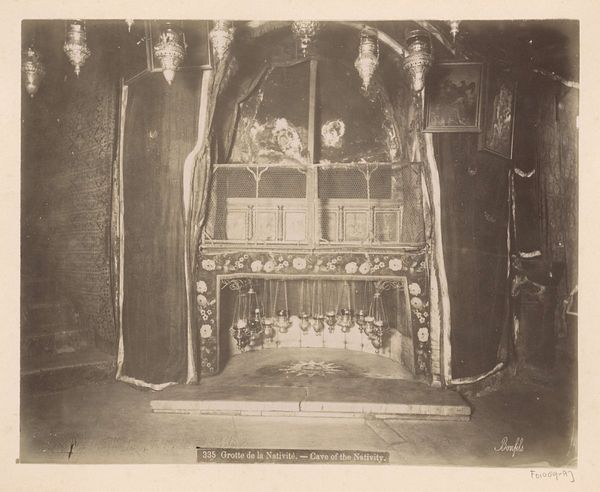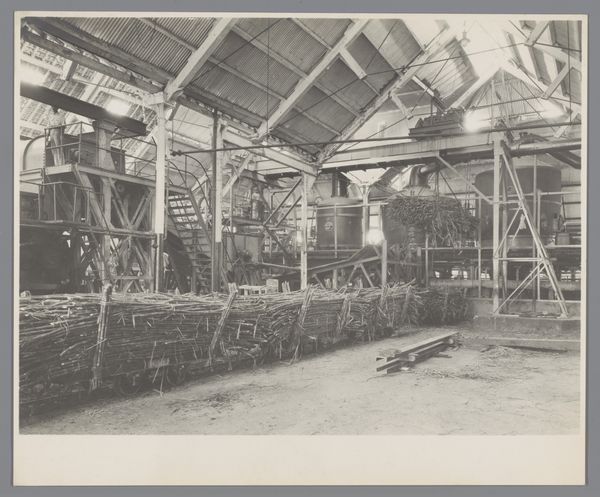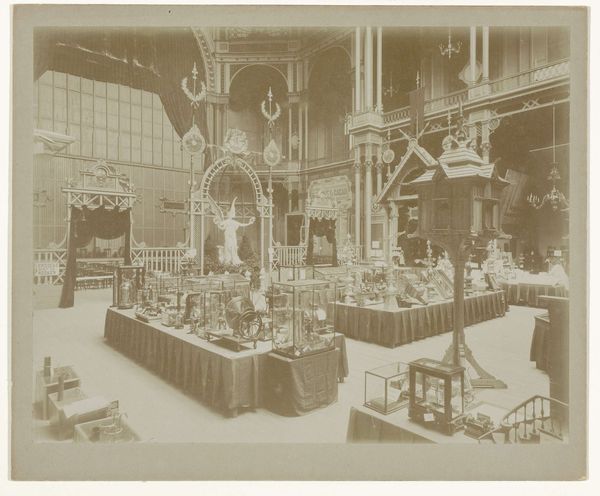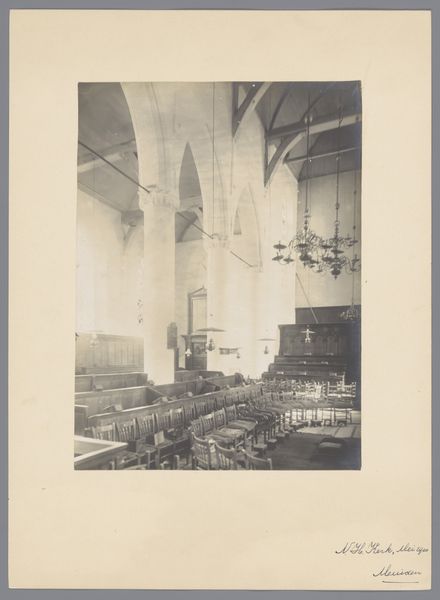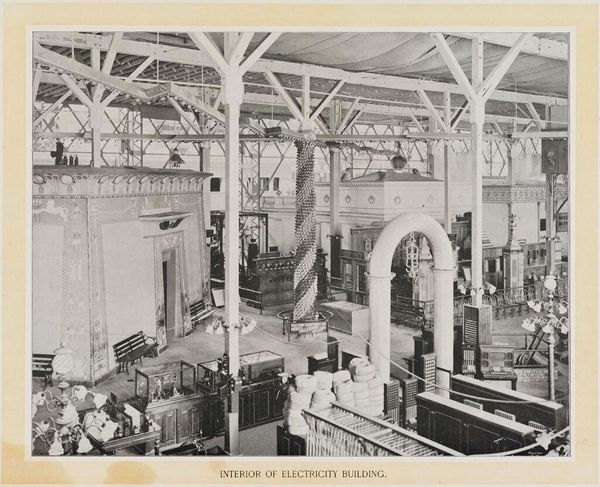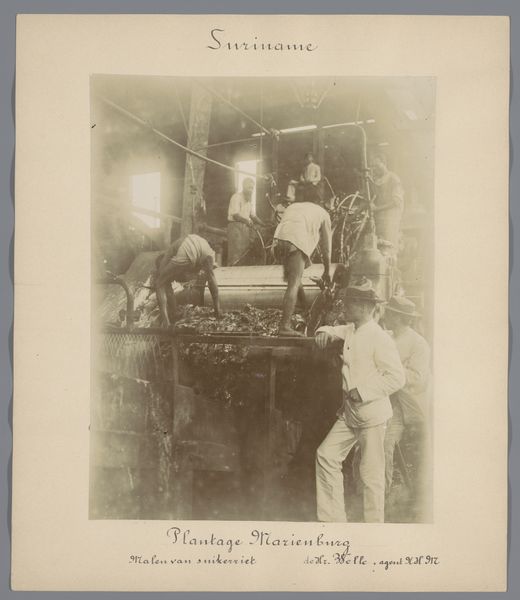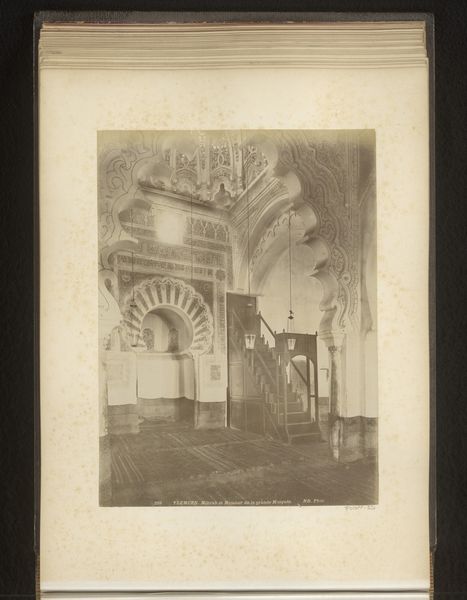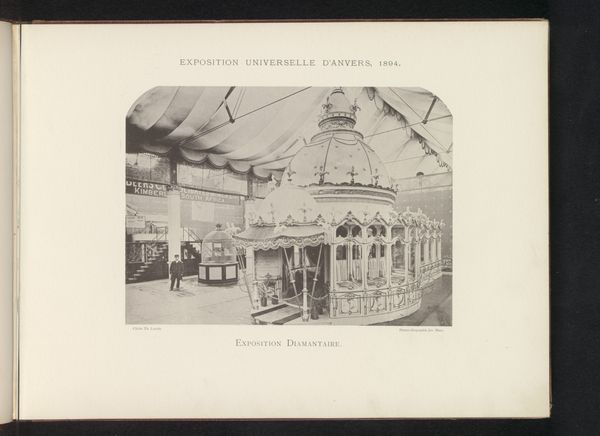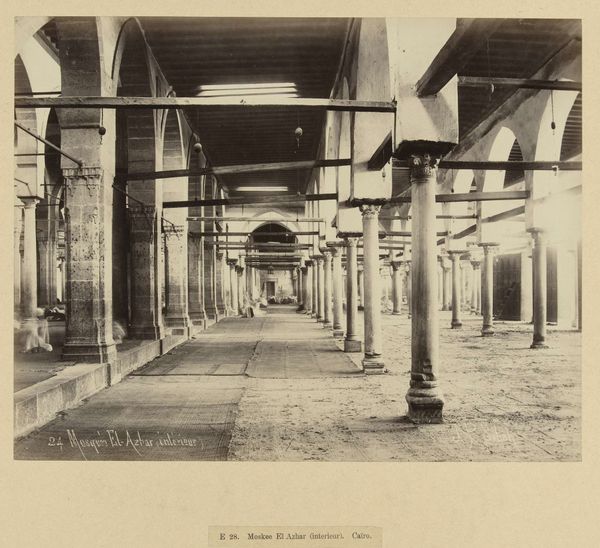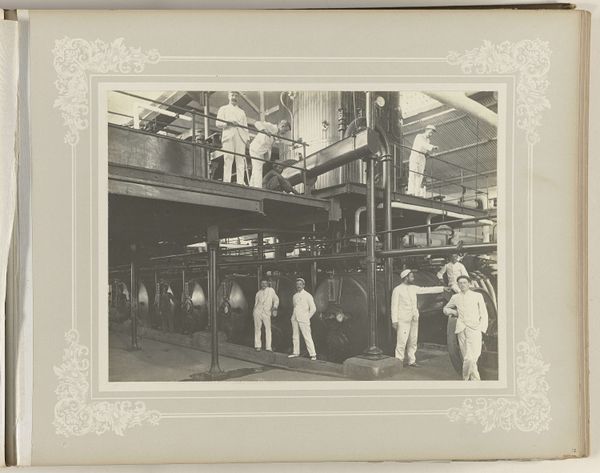
#
pencil drawn
#
amateur sketch
#
light pencil work
#
pencil sketch
#
charcoal drawing
#
charcoal art
#
pencil drawing
#
old-timey
#
19th century
#
pencil work
Dimensions: height 217 mm, width 283 mm
Copyright: Rijks Museum: Open Domain
Editor: This is a photograph titled "Interieur van de Geboortekerk in Bethlehem," or "Interior of the Church of the Nativity in Bethlehem" by Maison Bonfils, taken sometime between 1867 and 1895. The grayscale gives it a solemn feel, and the architectural details are incredible. How do you interpret this work? Curator: For me, this photograph isn't just about the architecture; it's about the power dynamics inherent in documenting a sacred space in Bethlehem during a period of intense colonial and religious contestation. What does it mean for a European photographic studio to capture and circulate this image of the Church of the Nativity? What stories are privileged, and which are silenced? Editor: I hadn't thought about it in that way. It seems so straightforward, just a photograph of a church. Curator: Exactly. That apparent neutrality is precisely what we need to question. Consider the gaze: Whose perspective are we seeing? Are we invited to admire the architecture from a position of faith or of detached observation? Who gets to control the visual narrative of this holy site? The Bonfils studio operated within a network of Orientalist representation. This photograph, then, participates in a larger project of defining and possessing the “Orient” visually. Does seeing it this way change your initial reading of its solemn mood? Editor: It does. It adds layers of complexity. Now I see it as less about reverence and more about representation and perhaps even appropriation. Curator: Precisely! This image opens a crucial discussion about how we approach historical photographs, especially those depicting non-Western subjects and spaces. Editor: It's fascinating to think about the multiple layers of meaning embedded in what seems like a simple photograph. Curator: Indeed. And by interrogating these layers, we can start to unravel the intricate web of power, representation, and history that shapes our understanding of the world.
Comments
No comments
Be the first to comment and join the conversation on the ultimate creative platform.

